- 0086-571-85302990
- sales@greenskybio.com
The process of extracting grape seed oligomeric proanthocyanidins from natural grape seed extract.
2024-11-27

1. Introduction: Significance of Grape Seed Oligomeric Proanthocyanidins
Grape seed oligomeric proanthocyanidins have gained significant attention in recent years due to their strong antioxidant properties. These properties make them highly valuable in various fields, such as health - care and cosmetics.
In the healthcare industry, they are believed to play a role in preventing chronic diseases. For example, they can help in reducing the risk of heart diseases by preventing oxidative damage to cells. In cosmetics, they are used for their anti - aging effects. They can protect the skin from free radical damage, which is one of the main causes of premature skin aging.
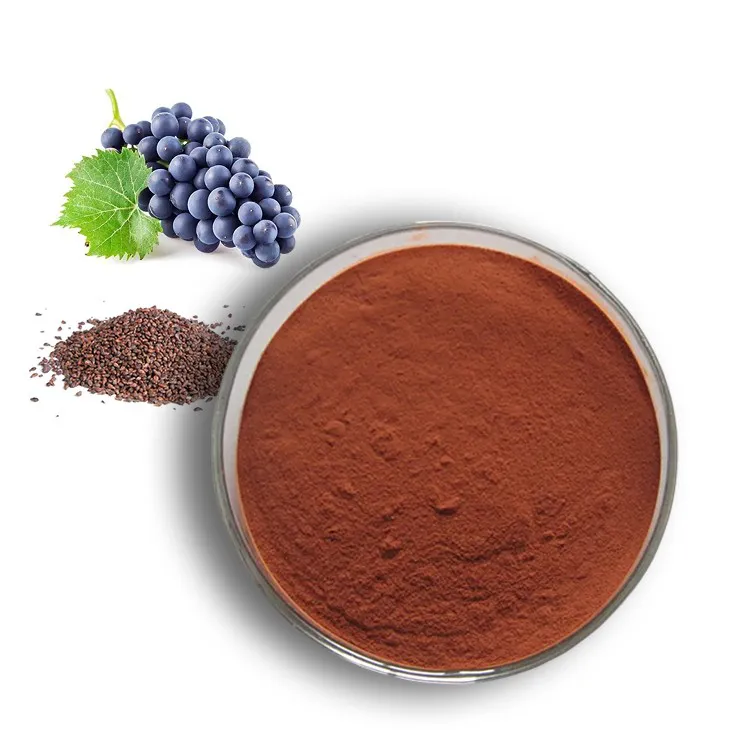
2. Raw Material Preparation from Natural Grape Seeds
2.1 Collection of Grape Seeds
The first step in the process is the proper collection of grape seeds. Grape seeds are obtained from grapes during the winemaking process or from the processing of grape - based products. It is important to ensure that the grapes are of high quality. High - quality grapes are more likely to yield grape seeds with a higher content of oligomeric proanthocyanidins.
2.2 Cleaning of Grape Seeds
Once the grape seeds are collected, they need to be cleaned thoroughly. This involves removing any remaining pulp, stems, or other impurities. Cleaning can be done using water and mechanical agitation. The goal is to have clean grape seeds that are free from any contaminants that could affect the extraction process.
2.3 Pretreatment of Grape Seeds
After cleaning, the grape seeds may require pretreatment. Pretreatment methods can include drying the grape seeds to a certain moisture content. This helps in improving the extraction efficiency. Another pretreatment method could be grinding the grape seeds into a fine powder. Grinding increases the surface area of the grape seeds, which allows for better interaction with the extraction solvents.
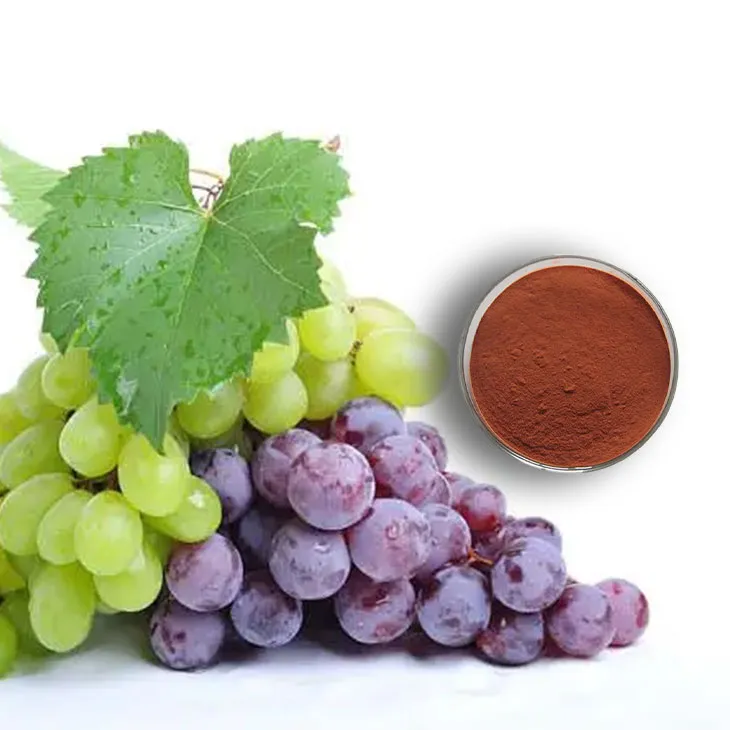
3. Extraction Techniques
3.1 Solvent Extraction
Solvent extraction is one of the most commonly used methods for extracting grape seed oligomeric proanthocyanidins.
Choice of Solvents: Different solvents can be used for extraction. Ethanol is a popular choice due to its relatively low toxicity and ability to dissolve oligomeric proanthocyanidins effectively. Other solvents such as methanol and acetone can also be considered, but their toxicity levels need to be carefully managed.
Extraction Time: The extraction time is an important factor. Longer extraction times may increase the yield of oligomeric proanthocyanidins, but it may also lead to the extraction of other unwanted compounds. Generally, extraction times can range from a few hours to several days, depending on the specific requirements.
Temperature: The extraction temperature also affects the extraction efficiency. Higher temperatures can increase the solubility of oligomeric proanthocyanidins in the solvent, but it may also cause degradation of the compounds. Temperatures typically range from room temperature to around 60 - 70°C.
Solvent - to - Material Ratio: The ratio of solvent to grape seed material is crucial. A higher solvent - to - material ratio may result in a higher yield, but it also increases the cost and complexity of the extraction process. A common ratio is around 5:1 to 10:1 (solvent:material).
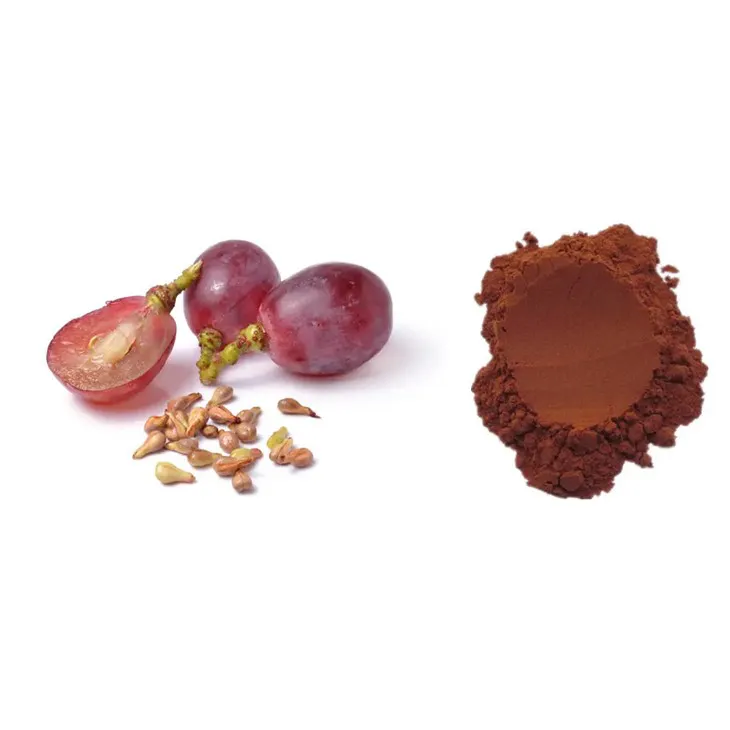
4. Purification Steps
4.1 Column Chromatography
Column chromatography is often used for purifying the extracted grape seed oligomeric proanthocyanidins.
The principle of column chromatography involves passing the extract through a column filled with a stationary phase. Different compounds in the extract will interact differently with the stationary phase, allowing for the separation of the target oligomeric proanthocyanidins from other impurities.
There are different types of stationary phases that can be used, such as silica gel or polymeric resins. The choice of stationary phase depends on the specific properties of the extract and the desired purification level.
During the column chromatography process, the extract is loaded onto the top of the column, and a mobile phase (usually a solvent) is passed through the column. The target oligomeric proanthocyanidins are collected as they elute from the column at a specific time or volume.
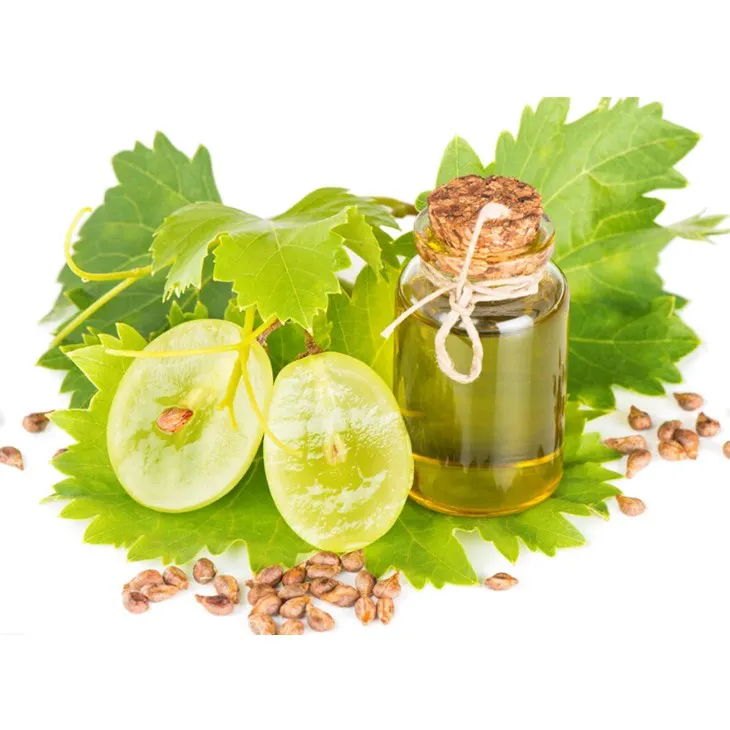
5. Quality Control during the Extraction Process
Quality control is essential throughout the extraction process to ensure the purity and activity of the final product.
Analysis of Purity: Various analytical techniques can be used to determine the purity of the extracted oligomeric proanthocyanidins. High - performance liquid chromatography (HPLC) is a commonly used method. HPLC can separate and quantify the different components in the extract, allowing for the determination of the purity of the oligomeric proanthocyanidins.
Testing for Activity: The antioxidant activity of the extracted oligomeric proanthocyanidins needs to be tested. One way to do this is through antioxidant assays, such as the DPPH (2,2 - diphenyl - 1 - picrylhydrazyl) assay. The DPPH assay measures the ability of a compound to scavenge free radicals. If the extracted oligomeric proanthocyanidins have high antioxidant activity, it indicates that they are of good quality.
Monitoring for Contaminants: It is also important to monitor for contaminants during the extraction process. Contaminants can include pesticides, heavy metals, or other impurities that may be present in the grape seeds. Analytical techniques such as atomic absorption spectroscopy can be used to detect heavy metals, while gas chromatography - mass spectrometry can be used to detect pesticides.
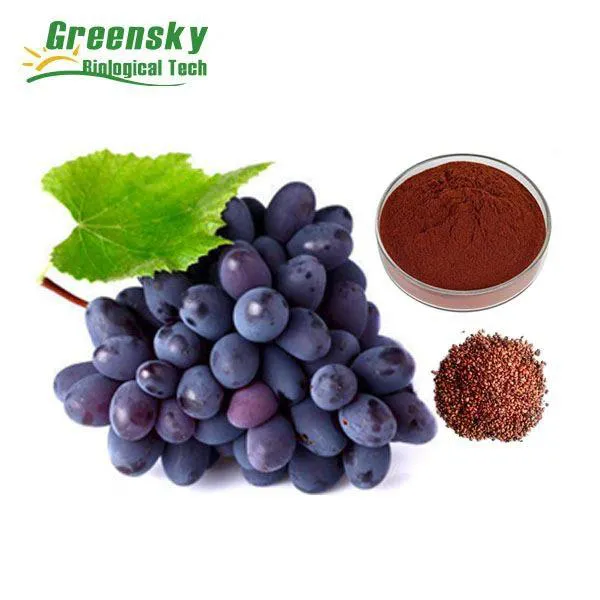
6. Conclusion
The extraction of grape seed oligomeric proanthocyanidins from natural Grape Seed Extract is a complex process that involves multiple steps. From the proper preparation of raw materials to the choice of extraction techniques, purification steps, and quality control, each aspect plays a crucial role in obtaining a high - quality product with high purity and activity. With the increasing demand for grape seed oligomeric proanthocyanidins in various industries, continuous research and improvement in the extraction process are necessary to meet the market requirements.
FAQ:
What are the main applications of grape seed oligomeric proanthocyanidins?
Grape seed oligomeric proanthocyanidins have strong antioxidant properties, so they are widely used in health - care and cosmetics fields. In health - care, they can help prevent oxidative stress - related diseases. In cosmetics, they are often added to products for anti - aging purposes.
How are natural grape seeds prepared as raw materials?
The preparation of natural grape seeds as raw materials includes proper collection, cleaning, and pretreatment methods. For collection, ripe grapes are usually selected. After collection, the seeds are carefully removed from the grapes and then thoroughly cleaned to remove any remaining pulp or debris. Pretreatment may involve drying the seeds to a certain moisture content to ensure better extraction results.
What factors should be considered in solvent extraction?
In solvent extraction, several factors need to be considered for optimal yield. Firstly, the choice of solvents is crucial. Different solvents may have different extraction efficiencies. Secondly, the extraction time should be optimized. Too short a time may result in incomplete extraction, while too long a time may introduce impurities. Thirdly, the extraction temperature also plays a role. Appropriate temperature can enhance the solubility of the target compounds. Finally, the solvent - to - material ratio should be carefully determined to ensure efficient extraction.
How does column chromatography work in the purification of oligomeric proanthocyanidins?
Column chromatography works by passing the extract through a column filled with a stationary phase. The components in the extract, including the oligomeric proanthocyanidins and impurities, interact differently with the stationary phase. Due to these different interactions, the oligomeric proanthocyanidins can be separated from other impurities as they move through the column at different rates, thus achieving purification.
What are the key aspects of quality control during the extraction process?
During the extraction process, key aspects of quality control include ensuring the purity of the final product. This can be achieved by regularly testing for the presence of impurities. Another aspect is maintaining the activity of the oligomeric proanthocyanidins. This may involve monitoring the extraction conditions to prevent degradation of the active compounds. Additionally, standard analytical methods are used to measure the concentration and quality of the final product.
Related literature
- Extraction and Characterization of Grape Seed Proanthocyanidins"
- "Grape Seed Extract: Composition, Antioxidant Activity and Applications"
- "Optimization of Grape Seed Proanthocyanidin Extraction: A Review"
- ▶ Hesperidin
- ▶ Citrus Bioflavonoids
- ▶ Plant Extract
- ▶ lycopene
- ▶ Diosmin
- ▶ Grape seed extract
- ▶ Sea buckthorn Juice Powder
- ▶ Fruit Juice Powder
- ▶ Hops Extract
- ▶ Artichoke Extract
- ▶ Mushroom extract
- ▶ Astaxanthin
- ▶ Green Tea Extract
- ▶ Curcumin
- ▶ Horse Chestnut Extract
- ▶ Other Product
- ▶ Boswellia Serrata Extract
- ▶ Resveratrol
- ▶ Marigold Extract
- ▶ Grape Leaf Extract
- ▶ New Product
- ▶ Aminolevulinic acid
- ▶ Cranberry Extract
- ▶ Red Yeast Rice
- ▶ Red Wine Extract
-
Andrographis Paniculata Extract Powder
2024-11-27
-
Grape Seed Extract
2024-11-27
-
Maitake Mushroom Extract
2024-11-27
-
American Ginseng Root Extract
2024-11-27
-
Bamboo Leaf extract
2024-11-27
-
Diosmin
2024-11-27
-
Motherwort Extract
2024-11-27
-
Hawthorn Extract
2024-11-27
-
White mustard seed extract
2024-11-27
-
Black Pepper Extract
2024-11-27





















